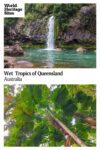Wet Tropics of Queensland
By Chris Fry
What is the Wet Tropics of Queensland?
The Wet Tropics of Queensland is a World Heritage site located on the northeast coast of Queensland, Australia. It stretches for 450 kilometres (280 miles) and covers over 800,000 hectares (over 3000 square miles), making it the largest tropical rainforest in Australia.
Disclosure: This article contains affiliate links. Making a purchase through an affiliate link will mean a small commission for this website. This will not affect your price. Privacy policy.
The Wet Tropics is home to an incredible diversity of plant and animal life, including many rare and endangered species. It encompasses about 30 different National Parks, including favorites like the Daintree National Park, Wooroonooran National Park, and Girringun National Park.
The rainfall here is among the highest in the world, with an average of 2.5 meters (8.2 feet) falling each year. This abundant rainfall provides the perfect conditions for this region’s lush rainforest, consequently creating some of the district’s most impressive waterfalls and waterholes near Cairns, along with incredible swimming spots.
The Wet Tropics is a truly unique place, and its importance to the global environment cannot be overstated. More than two million people visit each year to enjoy its rainforests, mountains, and rivers. And with good reason – it’s an incredible place!
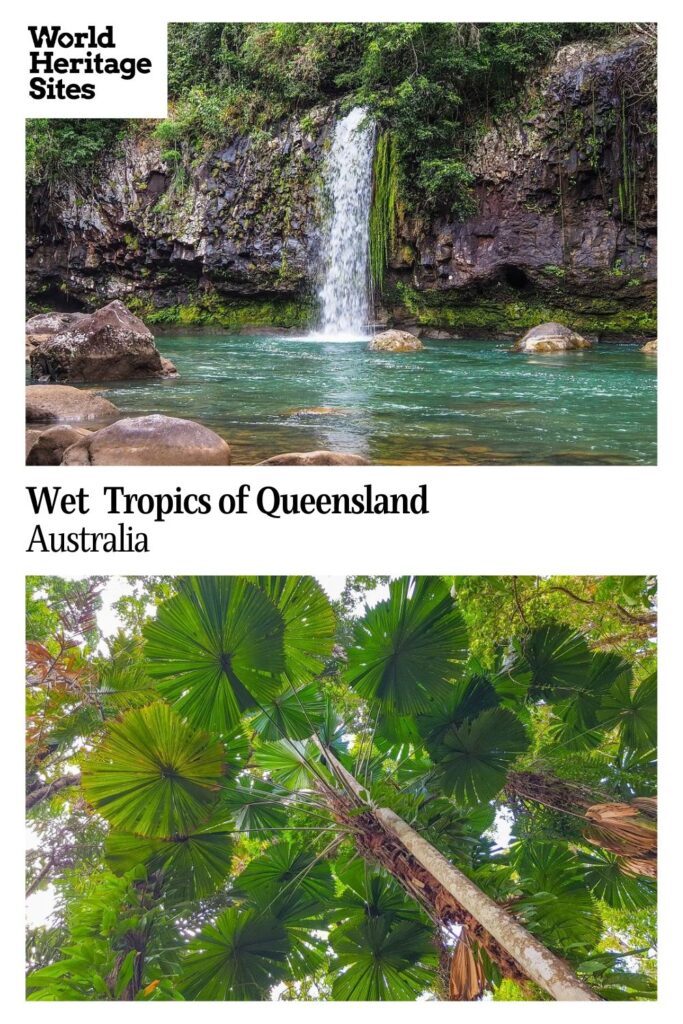
Why is the Wet Tropics a UNESCO World Heritage site?
According to UNESCO, The Wet Tropics rainforests boast an astonishingly complete record of the significant stages in the evolution and ecological processes of plant life on earth. Uniquely, many species within the area originated when Australia was still part of Gondwana. As one of the most diverse localities on the planet, it’s thought to be where the first plants appeared on Earth, along with most Australian animals.
Today, the Wet Tropics is home to an incredible array of plant life, including many rare and endangered species. It’s also one of the last remaining refuges for animals like the cassowary and the tree kangaroo. Recognizing its unique ecology, the Wet Tropics was listed as a UNESCO World Heritage site in 1988.
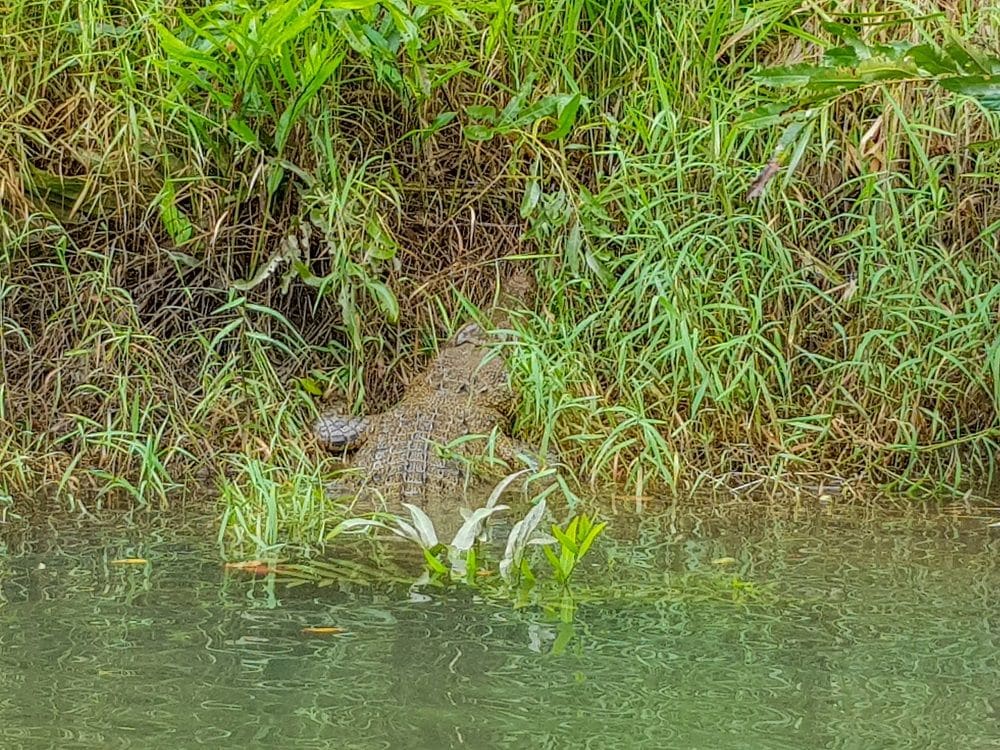
What can you expect on a visit to the Wet Tropics?
Hiking, exploring, and seeing incredible wildlife are popular activities in the Wet Tropics Rainforests. However, with 30 National Parks to choose from, it can sometimes be a bit overwhelming choosing which one to go to. Luckily, most of these centralise around the international gateway of Cairns, which is always a great place to start.
In addition, the Wet Tropics of Queensland is home to many rare and endangered species, making it a must-see for any nature lover. This ranges from delicate butterflies to massive crocodiles. Ultimately, be on the lookout for reptiles, amphibians, or even spot a cassowary or tree kangaroo!
The Wet Tropics are one of the most biodiverse regions on the planet, and it doesn’t matter how you experience it. So whether you’re a keen birdwatcher or just looking to connect with nature, the Wet Tropics will leave a lasting impression.
Kuranda National Park
Kuranda is a small village in the National Park and an easy 40 minutes drive from Cairns. Ultimately, one of the best ways to see it is from the Scenic Railway one way and the Skyrail Gondola on the return.
Enjoy a morning start from Cairns aboard the old school railway, which will have you passing tunnels, waterfalls, and listening to an open commentary about the area. After wandering around Kuranda for local arts and crafts, you’ll return to Cairns on the Skyrail Cableway and soar above the trees while taking in the sounds of the rainforest.
Skip-the-line tickets for the Scenic Railway and Skyrail Gondola.
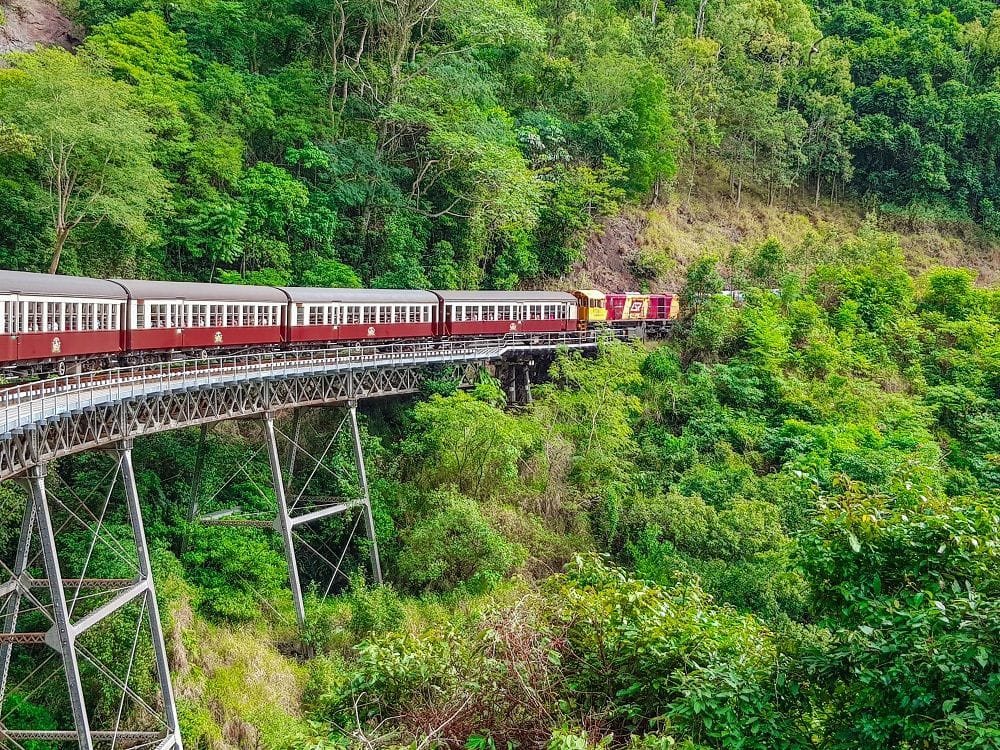
Barron Gorge National Park
Barron Gorge National Park can be discovered on its own, or you can get a small taste while travelling to Kuranda. Barron Falls is one of the most impressive and largest waterfalls in Queensland. However, this only happens in the summer flood season, around December to March. But it’s not the only waterfall and the park has plenty of places like Stoney Creek for freshwater swimming.
Daintree National Park
Daintree National Park is by far the most famous area of the Wet Tropics rainforests. It can be seen on a day trip from Cairns or by hiring your own car for a self-drive road trip.
Browse the rental car options in Cairns, Australia.
You can choose an accessible boardwalk trail and be surrounded by towering rainforest trees, ferns, and stunning creeks and waterfalls. Otherwise, if you’re feeling adventurous, you can explore one of the longer trails that delve deep into the forest.
Along the way, there are lookout points where you can admire the rainforest canopy. You can take river cruises to see the deadly saltwater crocodiles. Additionally, Indigenous tours allow visitors to learn about the traditional cultures, Dreamtime stories, and bush tucker.
Tully Gorge National Park
Tully Gorge is famous for its river rapids and popular among the adventure types wanting to ride the white water rapids. Apart from that, there are several waterfalls, lookout points, and camping areas in which to view the magnificent gorge.
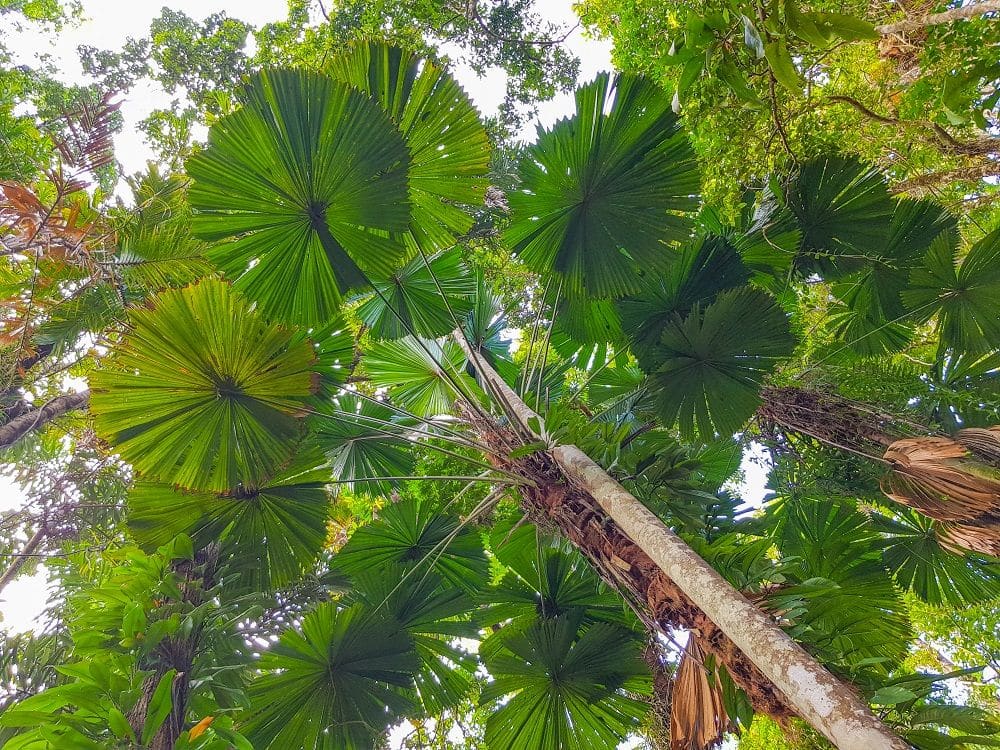
Is the Wet Tropics of Queensland worth visiting?
The Wet Tropics are one of the most biodiverse regions on the planet, and it doesn’t matter how you experience it. It’s one of the most gorgeous places on Earth. Waterfalls cascade down lush, green hillsides, rare and endangered animals roam through dense rainforests, and tropical plants abound.
The area is also home to several walking trails, making it the perfect place to explore the natural wonders of this unique corner of the world.
So whether you’re a keen birdwatcher or just looking to connect with nature, the Wet Tropics will leave a lasting impression.
So you ask, is the Wet Tropics of Queensland worth visiting? Then, yes, it is if you’re looking for a fantastic destination that offers something for everyone.
What sorts of travelers would like the Wet Tropics of Queensland?
The Wet Tropics of Queensland is a lush, tropical paradise that is perfect for outdoor enthusiasts. Hiking fans will love exploring the numerous rainforests and waterfalls. At the same time, road-trippers can enjoy winding their way through the mountainous ranges and valley floors.
Finally, animal lovers will be thrilled to spot some of the region’s unique wildlife, like the cassowaries, which are unusual and large flightless birds native to Northern Australia and New Guinea.
In short, there are activities for the whole family in the Wet Tropics of Queensland. So pack your bags and head down to this beautiful corner of Australia!
Browse a variety of tours and activities in the Wet Tropics area.
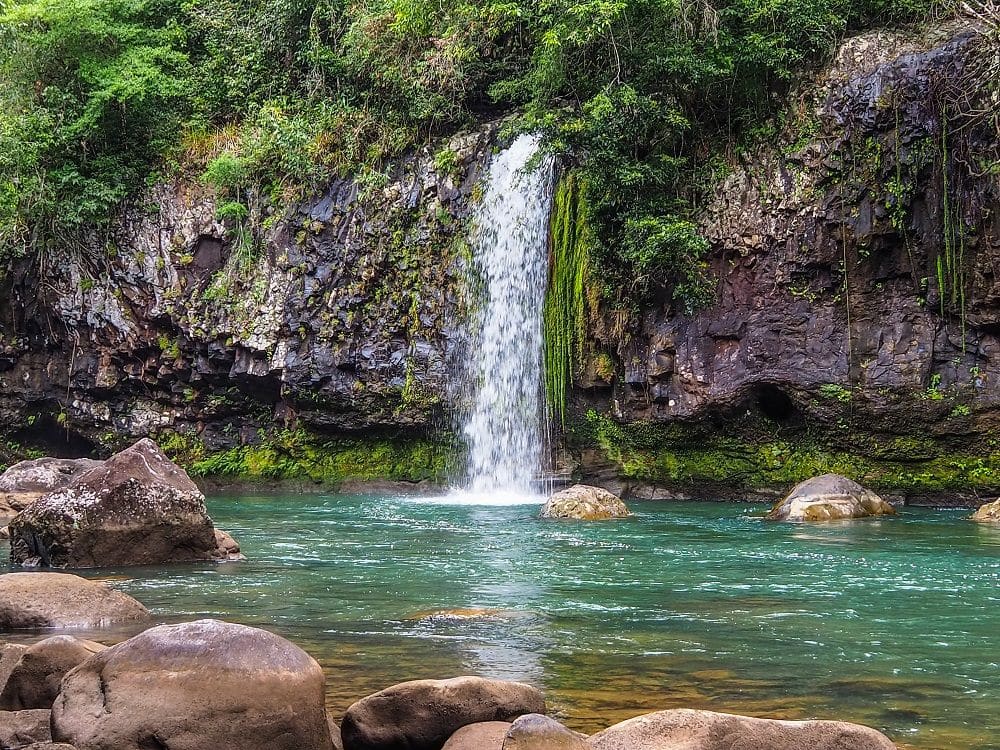
Tips for visiting the Wet Tropics of Queensland
Bring a rain jacket for those monsoonal changes in the rainiest places in Australia as well as light clothing layers for changes in temperature and evenings. This also protects from midgie/mosquito bites.
Bring mosquito repellent if you’re prone to bites.
The best time to visit is during the winter season for a more comfortable temperature. This is from April to October.
The best time for waterfalls is in the summer season, from December to February, but at this time it is also very hot and humid with a high probability of rain.
With some advance planning, you can enjoy exploring this unique and beautiful corner of the world, and it would make a wonderful trip to combine this natural wonder with visiting the Great Barrier Reef, whether from the shore, on the water, or under it.
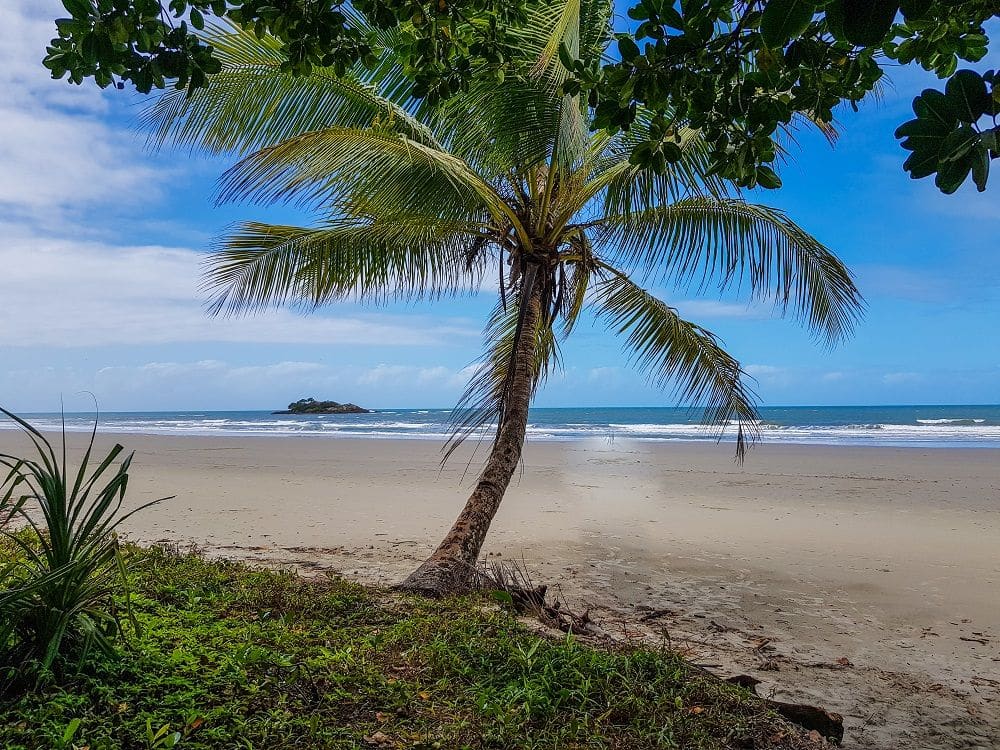
Where is the Wet Tropics of Queensland?
The Wet Tropics of Queensland is situated in Tropical North Queensland, stretching from Townsville to Cape Tribulation, centralizing around Cairns. With so many National Parks to visit in the Wet Tropics, it opens up many different towns to start from. This includes locations like Mission Beach, Innisfail, Cairns, Port Douglas, and Cape Tribulation. All of these are within an hour of the World Heritage-listed area.
Book your accommodations in North Queensland.
You can venture around on your own self-guided voyage or join one of the organised group tours. However, if you really want to learn about the Wet Tropics area, following a knowledgeable guide will help teach you things you would not have found out on your own.
There is very little public transport in Queensland National Parks, but you can use flights, buses, and train transport into the nearby cities and join day trip tours from there.
For more information about the Wet Tropics of Queensland – walking trails, visitor information centres, opening hours, admission fees, locations and lots more – see its official website.
Have you been to any part of the Wet Tropics of Queensland? If so, do you have any additional information or advice about this UNESCO World Heritage site? Please add your comments below!

